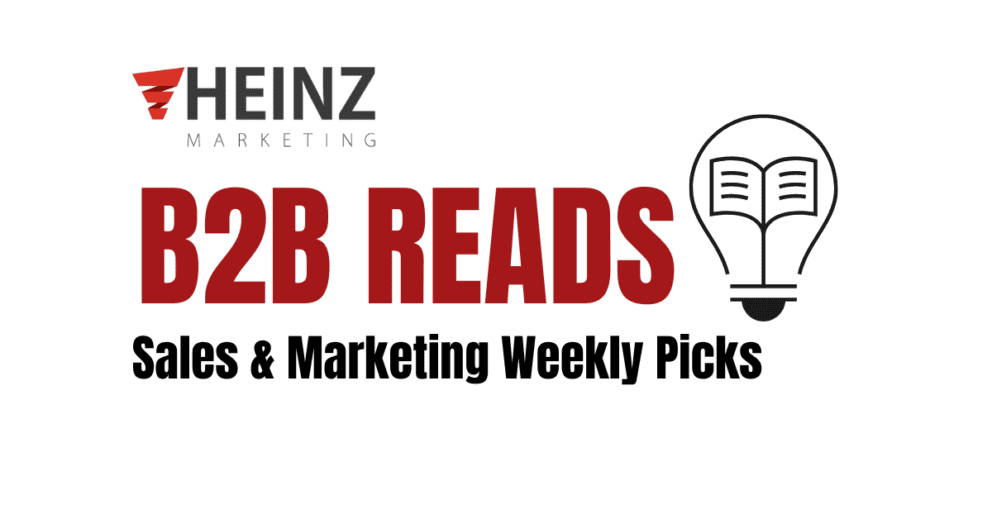Customer Journeys, Confidence and the Joy of Figuring it out for Yourself

By Tom Swanson, Engagement Manager at Heinz Marketing
Going on SaaS websites lately, it feels like marketers actively get in the way of figuring things out. This is probably done with the best of intentions. Folks are trying to script a path through a difficult topic, while also making a buck. I get it.
But these journeys often lose the path themselves. It is all the rage these days to say that customer journeys are non-linear, but there is a lot less talk on how to leverage that.
One way to figure that out is to dig into the reasons why our linear journey models are obsolete, and understand some of the mechanics.
Confidence is at the core of a buying decision. At each stage of a journey, the prospect is seeking additional knowledge and understanding. First this is of a problem, then it is of a solution, and finally it is of their options.
A buyer’s journey today, then, should help you understand the path to three milestones of buyer confidence. The first is when the buyer is confident they understand the problem they need to solve. The second milestone is when the buyer is confident they understand how this problem can be solved. Finally, the third is that they are confident your option is the best for them.
This conveniently aligns with a top/middle/bottom messaging framework. However, merely applying this framework to a funnel doesn’t make it any more helpful. We need to go deeper and better understand “confidence”.
As a quick aside, this is applicable into customer marketing as well, but the flavor changes. Now, the confidence question is: How do you engender confidence that your product is creating value? Or in other words: How do you prove ROI? A question for the product people and an argument that they must also understand confidence.
On Confidence
“What is confidence and how do I create it?” is something I asked myself frequently throughout my teens. Now here I am asking it again, in a mostly different context. It is funny how things come full circle.
There is plenty of academic research on confidence that can help us with this existential question. Here is a summary of some big factors that impact confidence:
- Self-Efficacy: Self-efficacy refers to an individual’s belief in their ability to perform a specific task or activity successfully. Research has shown that self-efficacy is a strong predictor of confidence (Bandura, 1997).
- Past Experiences: People’s confidence levels can be influenced by their past experiences, both positive and negative (Zwilling, Martin, & Judge, 2015).
- Physiological Responses: Stress and anxiety can have a significant impact on confidence levels (Dweck, Chiu, & Hong, 2017).
- Social Support: Social support from family, friends, and other sources can impact an individual’s confidence (Baumeister & Leary, 1995).
- Risk-Taking: Taking risks and challenging oneself can have a positive impact on confidence (Zimmerman & Schunk, 2011).
- Self-Affirming Behaviors: Engaging in self-affirming behaviors, such as listing one’s strengths or writing about one’s values, can positively impact confidence levels (Swann, Gómez, Seyle, & Huici, 2017).
Most of these are pretty obvious and straightforward, but each presents an opportunity to build prospect confidence in your product, and more importantly, in themselves.
As you may have guessed, though, this article is about self-efficacy, so let’s dive into the joy of figuring things out for yourself.
Figuring it out for yourself
Stop me if you have heard this one before: The modern buyer’s journey is increasingly in the hands of the buyer themselves. Sound familiar?
The concept has been talked to death, and for good reason. It is scary to let go of elements of the buyer experience in order to allow people to figure things out for themselves. The potential upside is significant, and a well-designed journey that focuses on helping prospects engage their own self-efficacy yields more positive affect for your brand and more qualified opportunities.
The concept is simple: Confidence is earned. It takes time and effort to cultivate it. Without effort, what appears as confidence is actually bluster. As humans, we need to take our own steps on our own terms to truly feel confident. We need to figure it out for ourselves.
So, now to the more practical options. Here are some ways to enable buyers to build their understanding and confidence without scripting too much.
Ungate
The first is to ungate content, particularly for problem-confidence stage prospects. This is a simple move that can be very intimidating, but is crucial for prospects to educate themselves using your content. Focus this on your top-funnel, and ungate it all. You need everyone possible to understand the challenges your solution solves, and valuable information gets shared.
Trust that the prospects will associate their learning with your brand, if your content is best.
Focus
The second is to focus on hand-raisers, not lead scoring or other intent assumptions. People who raise their hands are telling you they are ready to talk. There is no more guesswork.
This perspective shift drives changes in your strategy that will center around how people become hand-raisers on their own, rather than make assumptions about what a prospect wants. Suddenly you let go of all of those metrics that don’t map to revenue as strongly, and allow you to focus on what works. Most other things are far more costly, just look at the CAC for inbound vs. outbound leads.
Reveal
Third, don’t hide key information. I don’t even know why this is something we need to discuss anymore. Hiding pricing and feature specifics is so 2015. If you want someone to gain confidence in the solution and ultimately the product choice, you need to give them all the information they need.
Predict
The fourth is to use AI to craft dynamic paths. If you need a tool-based approach that offers some data and support, then dynamic content paths can offer you a balance of structure and risk. These tools are pretty common these days, and they take all different shapes and sizes.
There are content pathing options like PathFactory that use AI to serve next step content like Netflix. These are great for if you have a robust and valuable content library.
Listen
And finally, the fifth is to let customers tell you their attribution story. Attribution is broken, and suffers often from the correlation/causation fallacy. If someone comes in through paid search, that doesn’t mean paid search drove the sale. You may be able to make decisions off the paid search information, and those might even be profitable. However, you miss the key piece of the story that can help you achieve far greater success.
So if you are in doubt, just ask your hand-raisers what made them raise their hands. A simple, required, “how did you hear about us?” on the demo form can offer outstanding insights in just a few weeks.
But qualitative data is hard, and my next post will focus on how to do qualitative data analysis for marketers. Stay tuned for that.
Conclusion
So there you have it, a bit about self-efficacy, confidence, and how to help prospects figure things out for themselves. Doing it this way will help your prospects connect with the information and confidence they need to make decisions.
Always happy to talk more with any of you, please email me at tom@heinzmarketing.com







